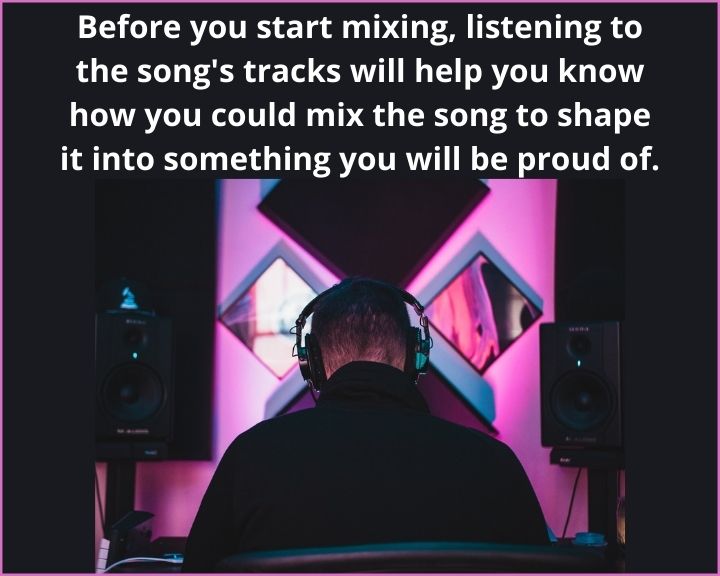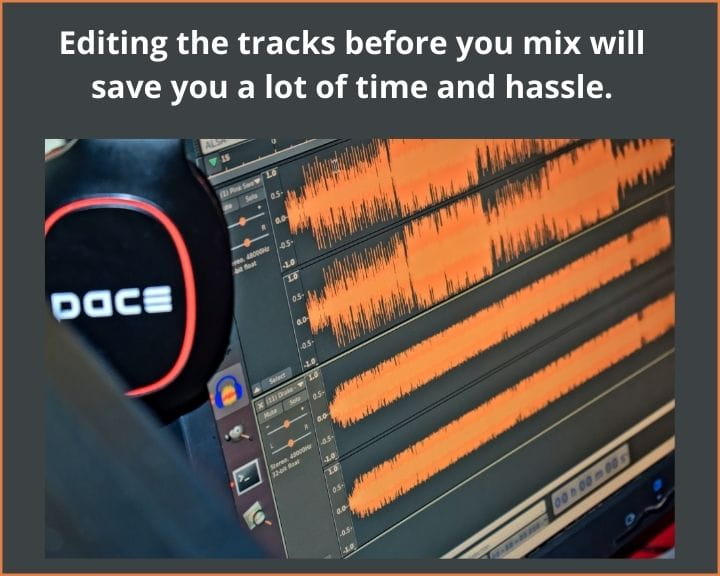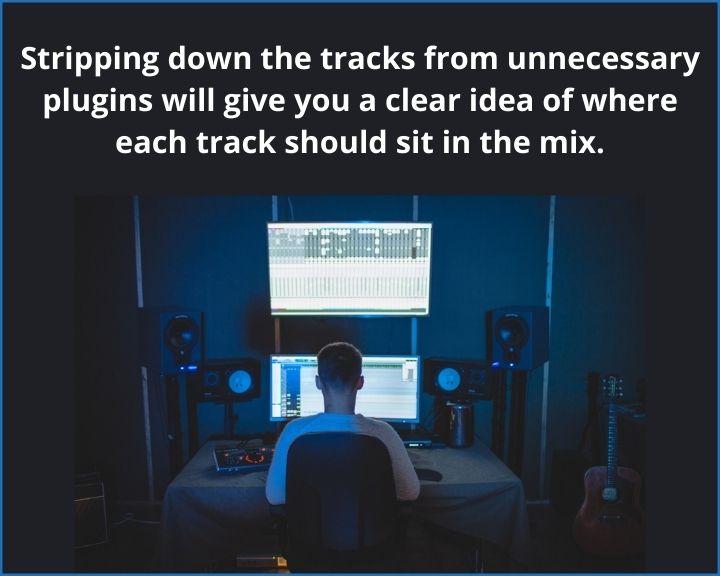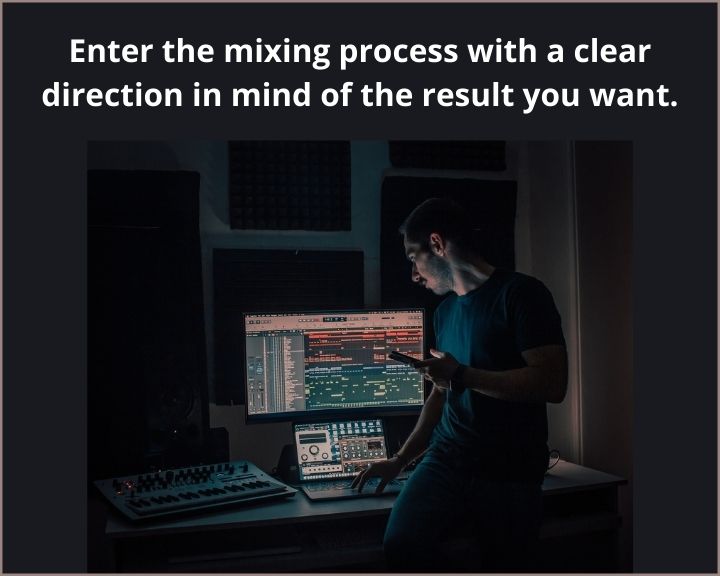There is nothing more daunting than mixing your own tracks. You might be a wonderful musician, but the recording process is an entirely different beast.
When you manage to get those demos the way you like them, the next move is to start mixing and mastering them to perfection. The trouble is, there are so many things to think about that you might feel overwhelmed to execute.
In this article, we will give you some DIY mixing and mastering tips to get better mixes. Hopefully, these can inform you enough to shape your songs into pieces that can play well and sound great when they leave your computer and hit the world.
Understand the Point of Mixing
When we’re just starting out, many of us take mixing and mastering for granted. We think, “it’s just something you have to do.” While it may be a necessary aspect of the recording process, we often gloss over or simplify the point of mixing.
Mixing is an effort that’s made to refine and improve your recordings. You can liken it to the process of drawing or painting in some ways.
You might draw an outstanding picture with a pencil. The forms are there, and there might even be some light shading in some places. This is your unmixed track.
Now, imagine that you go over those forms with a darker pen and use the pencil to add shading and refine your drawing. You might even use some paints and add color that totally changes the feeling of the picture. This is your mixed and mastered track.
Mixing and mastering allow you to refine and flesh out the original version. In doing so, you have opportunities that can change the entire feeling and scope of the song you’ve created.
The trouble with that is the fact that you could improve or damage the song. Your demo might have a particular quality that you like, and it’s easy to overwork the mix and remove that quality.
So, keep in mind that you’re creating a piece of art. There aren’t any specific rules on what you want the result to be. All you need to remember is that mixing should improve your song as you hear it.
You don’t have to overmix or perfect things that you don’t feel you need to.
With that said, here are our five tips for better mixes:
- Listen to the song before you start mixing
- Beware of ear fatigue
- Edit the tracks before you mix
- Strip the tracks down and then build-up
- Keep a mixing concept in mind
The following sections will expand on these five audio mixing tips that will make a big difference the next time you are working on your songs. Let’s get started.
1. Listen to the Song Before You Start Mixing
This seems like a no-brainer, but it’s astounding how often you see people starting to mix their music before they take time to listen back to the recorded tracks.
Sure, you’ve listened to the song in its entirety about 50 times as you recorded the tracks. But you might have only listened to snippets of the song or listened for a particular part of the song to see if you needed to change it.
Rarely in the process do you actually sit back and listen to the song with fresh ears. It makes sense, considering that you’re obsessing over tiny details and trying to ride out your inspiration while it lasts.
Nevertheless, it’s essential to take a moment when all is said and done and enjoy the song for what it is at this early stage.
Once you have all of the tracks recorded to your liking, listen. Turn off your critical brain and see how the song appears to you. Do that once, then go back and listen again and again.
Just give yourself enough listens to get a feeling for how you could mix the song to shape it into something you will be proud of. Again, mixing isn’t a mechanical process of turning things up and down.
It’s an art form, and it can make your song more creative, beautiful, and exciting. So, you have to ride your creativity and listen to the song in search of mixing ideas after you’ve recorded all of the tracks.

FURTHER READING: Best Studio Headphones
2. Beware of Ear Fatigue
Have you ever had what felt like a great late-night recording session? You spent all night laboring over something, only to find that it sounded like garbage in the morning?
How did you miss that buzzing sound? Why is that take so awful sounding?
You might be able to chalk it up to ear fatigue. We get burnt out when we listen to a track over and over again. Things start to blend together, and it’s tough to have a critical ear for almost anything at all.
Further, our subconscious mind starts to compromise what’s good with what’s easy. You may feel like Brian Wilson when you’re obsessing over a nuance that could make the song, but know that your ear, just like his, is subject to ear fatigue.
Give yourself enough time to recover. That amount of time can be different for everyone. You might fight ear fatigue by taking a ten-minute break every hour or so.
You could also take an hour break every few hours. Other tips include taking your headphones off when you’re not listening to the track, listening to different music occasionally throughout the session, or sleeping on an idea when you start to feel like it’s fading.

FURTHER READING: How to EQ Different Sound Sources
3. Edit the Tracks Before You Mix
If you take the time to edit and organize the various tracks on the song before you mix, you’ll have a much easier time.
Refine the song down so that all tracks occupy only the space that they’re meant to. If there’s a blatant buzz or massive low-end in one of the tracks, just make a quick correction to those issues.
Getting those blatant odds and ends out of the way will bring your song together pretty well. You might even feel like it’s close to being done once you’ve given it a little haircut.
It’s kind of like cleaning up your room before you work on a project. You might be able to get through the project, but it’s tempting to pick up the laundry, grab the trash, and wipe things down so you’ll feel better.
You’ll wind up doing worse on a project because you’re distracted by the clutter. The same goes with mixing. Those little scraps of trash in your track will distract you from the vision you have for the song.
So, take a few minutes or whatever time you need and tidy up the song so that it doesn’t contain any sounds that you don’t want to use in the final product. Then, tighten the belt on the mix enough to send the song in the direction you’re looking for.
You can then sit down and get to work on the actual mixing without any distractions.

FURTHER READING: Best Microphones for Recording Vocals
4. Strip the Tracks Down and Build Up
You may use a lot of plugins or applications in your initial recording session. This is a great way to explore new sounds and produce exciting ideas, considering the breadth of different sounds available to you.
When you start to mix, though, it may help you to save or write down those settings and then strip all of the tracks down to their barest forms. Doing this will give you a clear idea of where each track should sit in the mix, what it does for the song, and how you can proceed.
You might find that the plugin you were using helped you to produce the idea but doesn’t serve the song well.
When the tracks are bare, you can hear how they should be changed or manipulated to sound their best.
Once you’ve got the bare tracks situated in the mix, you can come back and reintroduce those plugins. You’ll find that an orderly mix allows for fresh ears when it comes to the nuances of the plugin, and this will make those tracks pop even more.

FURTHER READING: 5 Tips to Get the Best Vocal Recordings at Home
5. Keep a Mixing Concept in Mind
It’s always a good idea to enter the mixing process with a direction in mind. You can help yourself out by writing down your ideas and keeping them near as you start to mix.
Do you want your song to sound like a live performance? Do you want it to sound like it’s all taking place at once in the same room?
Alternatively, you might want to approach the mix as if you were working out a fine piece of art. In that sense, there’s no “environment” that you want the mix to situate itself in, but a general feeling or concept that you want it to convey.
In any case, it’s good to have some bumpers to guide your ball toward the pin. Constraints or concepts that hold your mix together should allow it to hit the nail on the head a little stronger.
You can try to work out those directions based on the nature of the song, what you hear when you listen back to it, or through a little brainstorming session before you start to mix.

FURTHER READING: Achieve the Best Sound Quality with Your Audio Mixer
Need More Mixing and Mastering Tips?
We hope these audio mixing techniques will help you get a better final product. Take all these tips for better mixes with a grain of salt and trust your gut, though.
After all, you’re the artist, and your art should reflect your perspective. We’re here to help when you have questions. Explore our site for more mixing and mastering tips, recording ideas, and everything else you need to record a great song.